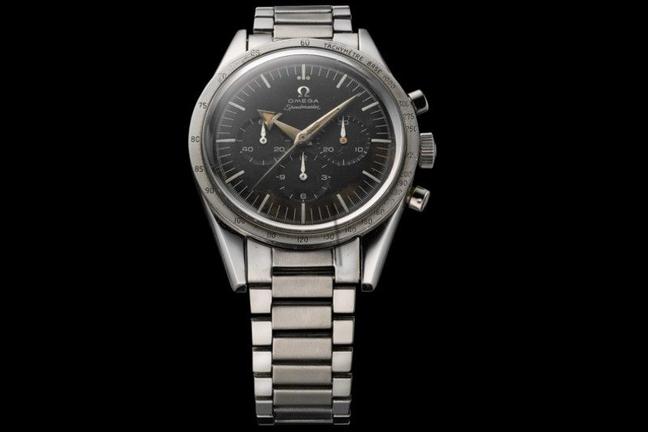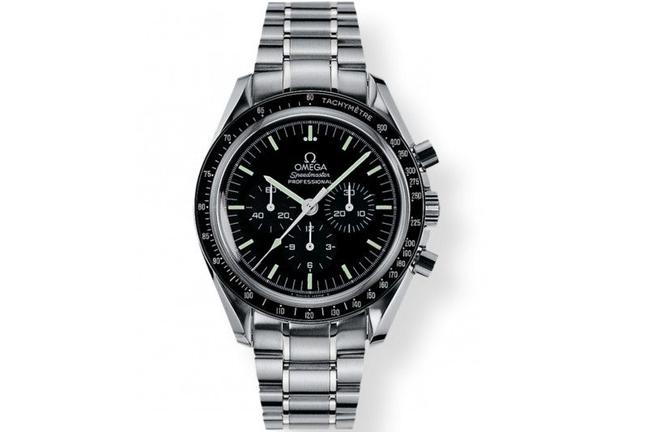Few watches are as iconic as the Omega Speedmaster. Like all great designs it has stood the test of time, ageing gracefully and gaining only further acclaim as the years go by. It comes with a great story too. Originally produced in 1957, it wasn’t Omega’s intent for it to be worn on the Moon. Instead, it was created as a timekeeper for motorsport or other sporting events, slotting perfectly into the brand’s lineup of the time which included the Seamaster and Railmaster, as well as the Speedmaster.
The Speedmaster stood out though. Its easy-to-read design was an instant hit and it was innovative too. It was the first watch to feature a tachymetre separate from the dial, and in placing it on the bezel it freed up space, giving a cleaner, more streamlined appearance that went down a treat. Indeed, the Speedmaster was arguably the first mainstream chronograph; it stuck out among the smorgasbord of almost feminine, petite dress watches that were so popular during the period.

The original Speedmaster is remarkably similar to what’s on offer today. It features the same familiar three sub-dial layout as well as the thin, sleek hour markers, elegantly slim lugs and small pushers at 2 and 4 o’clock, respectively. It can be categorised by the aforementioned bezel (finished the same as the case as opposed to black), as well as the famed ‘arrow’ hands, which coincidently have been featured on Omega’s new model – based on this original – which has been dubbed the Speedmaster ’57.

Photo: Fratello Watches
Succeeding the first Speedmaster (Ref. CK2915) was this watch, the CK2998. It boasts a number of changes and improvements, including an easier-to-read black aluminium bezel, newly designed hands and a slightly larger case (40mm compared with 39mm). It was also a milestone watch for Omega though, as in 1962 it travelled to space on the wrist of Wally Schira during one of America’s Mercury space missions. Thus, the Speedmaster’s aeronautical relationship was born and a partnership with NASA began, in a collaboration that’s still going to this day.

When it comes to the most famous of all Speedmasters though, this reference, the ST105.012 is arguably the one. It was the watch that went to the Moon with both Neil Armstrong and Buzz Aldrin during the Apollo 11 space mission, although it only walked the Moon with Aldrin (Armstrong left his on board the craft). Due to its age, the piece above features a faded bezel and worn luminescent paint on the hands, but the ST105.012 is pretty much identical to the Omega Speedmaster Professional on sale today. It features the same ‘pencil’ hands as well as a redesigned case complete with widened lugs and added protection for the pushers and crown. The case size was also increased to 42mm, a thoroughly modern size and one that, for today, is the go-to for sports watches everywhere.

Today the Speedmaster is a true legend. It’s been reincarnated in numerous special editions, but it’s the standard Professional that’s undoubtedly the best. Omega must be commended for remaining faithful to the original watch; its design has only changed subtly over the years, which is even more impressive considering it will soon be celebrating its 60th anniversary.
For more information, visit Omega.

Become a Gentleman’s Journal Member?
Like the Gentleman’s Journal? Why not join the Clubhouse, a special kind of private club where members receive offers and experiences from hand-picked, premium brands. You will also receive invites to exclusive events, the quarterly print magazine delivered directly to your door and your own membership card.


